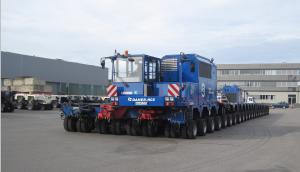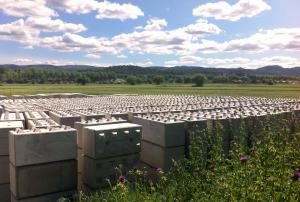It's a short ride for an automobile, but it's a long, slow haul for a 352-wheel vehicle carrying an 800-tonne load.
It is also a very complex and delicate journey. Organizing the
test convoy that will travel the 104 kilometres of the ITER Itinerary during the nights of 16-20 September has required a tremendous amount of planning and coordination.
The Itinerary is a EUR 112 million contribution from France to the ITER Project.
In order to bring about the test convoy, an "enormous technical, administrative and regulatory machine" had to be fine-tuned, according to Pierre-Marie Delplanque, a former French navy Admiral , who is in charge of overseeing operations along the ITER Itinerary for Agence Iter France.
In addition to the two main actors—Agence Iter France and logistic services provider DAHER—planning has involved coordinating dozens of authorities representing four départements, government agencies, specialized technical services and local governments.
This four-night campaign of tests and measurements aims at verifying that the loads—and the stresses they cause to the roads, bridges and roundabouts of the ITER Itinerary—agree with engineering calculations. Such a test operation merges the rigor of methodical scientific survey with the challenges of the Highly Exceptional Load (HEL) convoys that will deliver the largest and heaviest ITER components to the site.
As the test convoy progresses from the shores of the Étang de Berre towards the ITER site in Saint Paul-lez-Durance, hundreds of measurements will be taken: manoeuvring space and operational margins will be assessed, stress on the bridges will be appraised and triple-checked, and behaviour of the transport trailer will be closely monitored.




